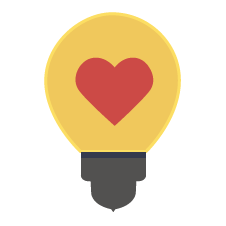
Team projects were so much simpler back before the internet hit the mainstream. Sure, the possibilities were nowhere near as extensive, but you could rely on people to share an office environment. Meetings were busy affairs, and everyone had an opportunity to ask questions and get their perspective across. Visual collaboration — everyone involved in a project being in a position to see and understand exactly what everyone else was doing — was a natural result.
But then along came digital infrastructure, and the ties that bound companies together began to fray. Remote working became a possibility. Work could be stored and shared online, accessible from anywhere at any time. Alterations became non-destructive. This massively expanded the flexibility, versatility and power of business, but it also took away that traditional transparency.
To recreate the workplace cornerstone that is visual collaboration, specific technology had to be developed. In-progress content sharing developed. Video conferencing became common. But it was only when the trusty whiteboard entered the online world that visual collaboration returned to its former glory.
How are online whiteboards so significant in bringing everyone together? Let’s take a look:
They’re familiar and easy to use
If you’re very tech-savvy and work for a forward-thinking company, it can be easy to forget that there are still plenty of workers out there who aren’t very comfortable with digital technology. Using a computer is one thing, but what about handling conferencing software or implementing edits to a shared project? Those skills are completely unfamiliar, and thus tough to pick up.
A whiteboard, though, is a recognizable format. All they need to learn is that they click the mouse button and drag the cursor to draw as they would with a marker pen. There are more advanced features, of course, but that central hook is enough to get them involved — and once they’re involved, they can start lending their colleagues the benefits of their wisdom (and the more they enjoy using the software, the easier it will be for them to learn more about it).
They allow essential informality
It’s important to take business seriously, but not too seriously, and a problem with a lot of project management tools is that they encourage people to take a lot of time to carefully polish things into impressive presentations. When you’re trying to puzzle through a thorny design roadblock, you don’t need formal presentations — you need everyone getting involved, making quickfire suggestions using scrappy ideas.
Whiteboards are perfect for this because they’re so simple to use and everyone can get involved at the same time using different colors. It’s very challenging to create sophisticated illustrations in that environment, so people can relax a little and focus more on the concepts than on the execution. Once the solution has been found, it can be dressed up and turned into a professional document: why be self-conscious during brainstorming?
They serve as remote hubs
Remote teams can be scattered throughout the world, particularly in a time of digital entrepreneurs having such remarkable options for scaling up rapidly. Consider that anyone can buy an ecommerce store (no matter where they actually live), then staff it on an ad-hoc basis while they prepare it for launch through freelancer platforms such as Fiverr or Upwork. This is great for professional flexibility, but not for unity.
This is because having to corral such a scattered team will place anyone under a lot of pressure, with more and more of their time going towards reaching out to individual workers and trying to get them moving in the same direction. Project management tools help with milestones and time tracking, but they often leave people uncertain about what their colleagues are doing, what their roles involve, and what they’re like as people.
By sharing a whiteboard, team members can provide much-needed context about their tasks as they discuss matters through VoIP services, using basic illustrations to add to their commentary. Some people are visual learners and struggle to understand things otherwise, so the value of gathering everyone to focus on one screen cannot be underestimated.
They keep people engaged
Even when meetings are entirely justified, they can be exceptionally dull. Our minds need to remain active or they’ll start to wonder, and there’s only so much sitting and watching we can do before a PowerPoint presentation starts to fade into a dull hum. Project management tools can let people edit a document simultaneously, but fleshing out some paragraphs is unlikely to be enough to get your creative juices flowing.
Drawing, though, is a different beast altogether. Given space to be playful and find inventive ways to express points, people will be highly engaged with whiteboard discussions. On top of that, they’ll get an interesting insight into their respective skills. It’s enjoyable to see how people draw and visually represent their thoughts (just as it’s fun to head to team karaoke and find out who the half-decent singers are).
Finding it challenging to get everyone on your team working in a cohesive way? Setting up an online whiteboard might be just what you need to bolster visual collaboration. With ideas out in the open and everyone learning about each other, productivity and efficiency should rise, and project management should become vastly easier!
 |
Kayleigh Alexandra is a content writer for Micro Startups, a site dedicated to supporting startups and small businesses of all shapes and sizes. She can’t draw competently, but that doesn’t stop her from enthusiastically participating. Visit the blog for entrepreneurial tips, and follow along on Twitter @getmicrostarted. |
Sketchboard is an online whiteboard for teammates to draw diagrams together collaboratively. Test it out.

